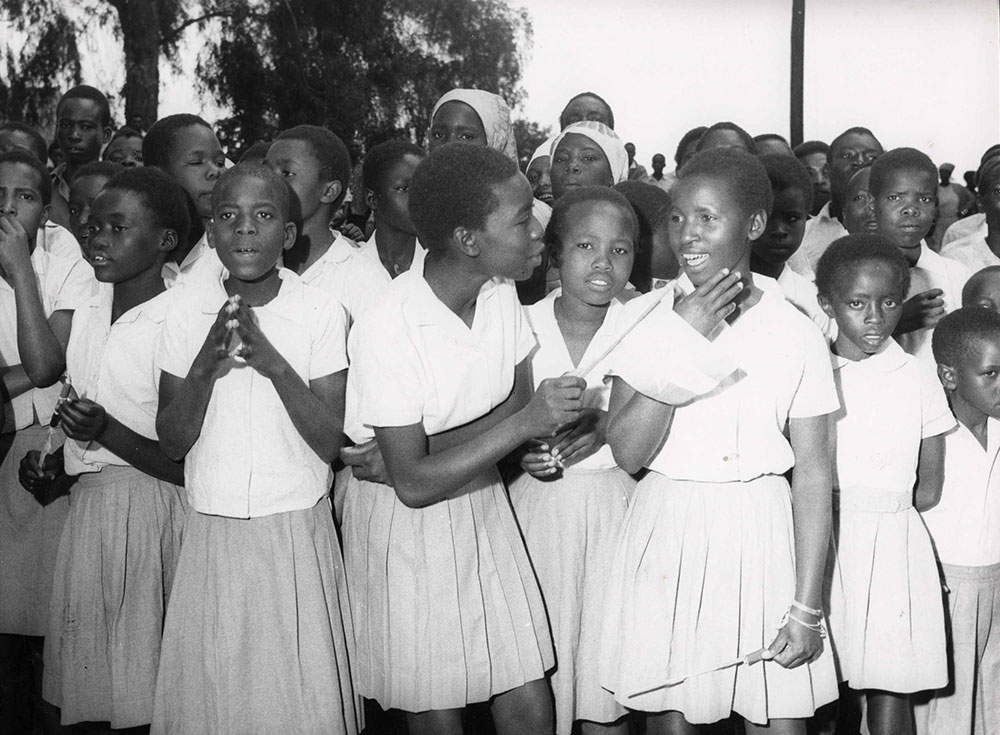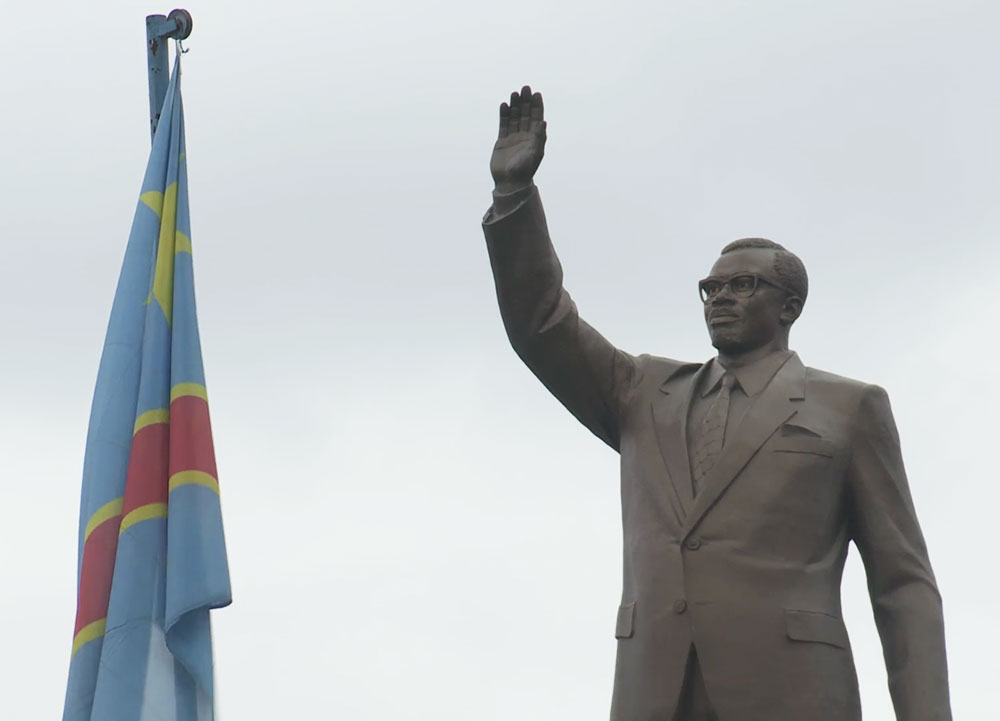Art, image and ideology: the history of Soviet relations with Africa, told in pictures
Red AfricaMoscow-born and based in New York since 1994, the artist Yevgeniy Fiks has spent the last decade exploring the intersections of American and Soviet culture. From Song of Russia (2005-2007), which saw him recreate imagery from sympathetic Second World War Hollywood depictions of the USSR, to Homosexuality is Stalin’s Atom Bomb to Destroy America (2012), which explored the McCarthyist Lavender Scare that equated homosexuality with communist sedition, Fiks is dedicated to disrupting the hackneyed imagination that pit the Free West against the Brutal East.
Perhaps nothing complicates the idea of the Cold War as a binary conflict between the US and the USSR as much as the issue of race, the terrain covered in Yevgeniy Fiks’s most recent collaborative project, The Wayland Rudd Collection, parts of which are showing in the Calvert 22 Red Africa exhibition Things Fall Apart. As with so much of Fiks’s work, it was through his examination of the American left, he tells me, that he discovered the art of Soviet race relations.
“Eight or ten years ago, I was interviewing members of the American Communist Party. I discovered how important racial equality was to the American communist movement and how African-Americans played an important role in that movement.” From here Fiks turned to the Soviet representation of African and African-American life, recognising this as a field in which the USSR could claim a kind of solidarity with black populations that transcended national borders.
“There is some scholarship done on this subject, but none that focusses on visual art,” he says. “So, I decided to collect any image I could find where Soviet artists or filmmakers depict African-American or black African life.” The results were startling: around 200 images and works, dating from the 1920s to the 1980s, ranging, in Fiks’s words, “from really kitsch, petty bourgeois porcelain that you would use to decorate your apartment, to hardcore propaganda, and the very humane, observational drawings and sketches of African-American people from the 1930s and 40s.” At times the internal contradictions are startling: gross stereotypes of cannibalistic tribespeople alongside reverential potrayals of African independence leaders such as Kwame Nkrumah and Patrice Lumumba.
“It’s a very complex and contradictory legacy in which there is room for genuine internationalism, anti-racism and solidarity, alongside racial stereotyping and objectification”
Daunted by the scope of the material, Fiks invited contemporary artists from Russia, America and beyond to respond to the historical images he had sourced. The resulting artworks, accompanied by the “ambient, historical noise” of the Soviet originals, constitutes The Wayland Rudd Collection. Named after an African-American actor who emigrated to the Soviet Union in the 1930s in search of a more racially tolerant society, the Collection is true to its source material in its diversity of media: fabrics by Natalia Pershina-Yakimanskaya, short video pieces by Ivan Brazhkin, retooled propaganda posters by Dread Scott, portraits by Zachary Fabri. By making his contemporary project a collaborative one, Fiks ensured that the Collection reflected the lesson of the historical sources. “The Soviet legacy on race is not uniform,” he says. “It’s a very complex and contradictory legacy in which there is room for genuine internationalism, anti-racism and solidarity, alongside racial stereotyping and objectification. It’s by no means pure, by no means totally progressive and by no means a pure propaganda pretence.”
I ask him how Soviet representations of African and African-American issues shifted over 60 years. “In the 1920s and 1930s, those propaganda images seem a little bit more genuine to me – though that’s super, super subjective,” he admits. “Also, in the 1920s you see borderline racist advertisements brought over by Western companies. It shows that it wasn’t yet a fully totalitarian state – those racist advertising images are unimaginable from the 1930s onwards.”
In the years before and after the Second World War, he says, the imagery becomes more violent. “In the 1930s images of internationalism and solidarity combine with really brutal suppression, the brutal dehumanisation of African people. In the 1950s and 60s there are a lot of images of fighters: it’s the period of decolonisation in Africa, and you can feel a lot of hope, with strong images related to liberation.” As the Cold War thawed so did the artworks. “In the 1960s, 70s and 80s, it’s all a bit more mild,” Fiks points out, citing “the theme of peace and coexistence. There are a lot of images of mothers with children.” He says he prefers the earlier, more visceral material: “the propaganda in the 1970s and 80s feels a little more contrived in its execution, it seems very constructed, very commissioned.”
For African-American intelligentsia in the 1950s and 60s, seeing those Soviet images here, in America, was empowering and liberating
Does he think that by this point the question “solidarity” had become more about scoring points over America than about genuine anti-racism? “Possibly, yes. One of the criticisms I get for this work is that Soviet anti-racist propaganda is all pretence — the artists who made these images were commissioned and didn’t really believe it. But that’s a kind of double-talk. It’s impossible to tell [what the artist really thought].”
To indicate why these debates over “genuine” Soviet beliefs are misguided, Fiks recalls an incident during a talk he gave about The Wayland Rudd Collection in New York. “I was saying that while the utopian in me wants to believe [that the anti-racist sentiment is genuine], at the same time the late-Soviet cynic in me says that it was simply a way for the artist to make a living. Then this artist who was present, an elderly African-American gentleman, told me that it doesn’t matter what the artist was thinking. Because for African-American intelligentsia in the 1950s and 60s, seeing those Soviet images here, in America, was empowering and liberating. Whether the Soviet Union produced those images out of spite towards the US government, it doesn’t matter.”
As Langston Hughes, poet and powerhouse of the Harlem Renaissance put it in a 1940s poem: “Good morning Stalingrad!/ You’re half a world away or more/ But when your guns roar,/ They roar for me —/ And for everybody/who want to be free.”
“Even for some of the participants I invited to take part in the Wayland Rudd Collection, many of the historical images were really a revelation in the power or militant nature of their anti-racism.,” says Fiks. “This is something that doesn’t exist in mainstream historical culture in America.”
Images from the Wayland Rudd Collection are on display in the exhibition Things Fall Apart, part of the Calvert 22 Foundation’s Red Africa season, from February 4th - April 3rd.


